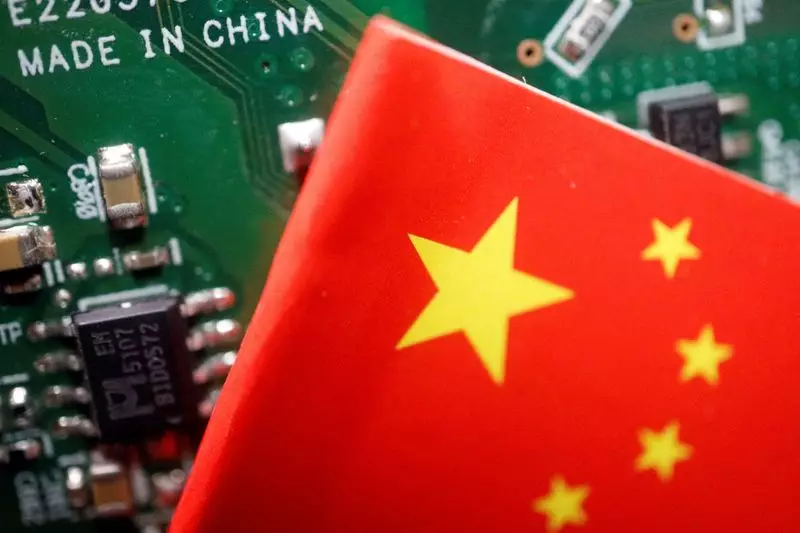The ongoing geopolitical tensions between the United States and China have resulted in a series of export controls targeting the Chinese semiconductor industry. The latest measures introduced by Washington represent a significant development, with broad implications for both U.S. and Chinese companies involved in chip manufacturing. These restrictions focus on high-bandwidth memory, essential manufacturing equipment, and software, impacting 140 companies in the sector. As firms adapt to these challenges, the industry demonstrates resilience, aiming to secure its supply chain and sustain production capabilities despite external pressures.
In the face of these restrictions, Chinese semiconductor companies are adopting proactive strategies to mitigate the impact. Firms like Naura Technology Group and ACM Research—who are now under the restrictions—are declaring their intent to localize their supply chains. By investing in domestic production and stockpiling critical components and equipment, these companies are attempting to insulate themselves from further disruptions. Empyrean, also known as Beijing Huada Jiutian Technology, communicated its fast-track plans to localize its full-process electronic design automation (EDA) tools in a stock market statement, signalling an aggressive pivot to maintain operational standards.
Similarly, Jiangsu Nata Opto-Electronic Material has opted to build inventory and replace shortfalls with domestic alternatives. On the other hand, Beijing Huafeng Test & Control Technology boasts that it has fully localized its supply chain, demonstrating a level of preparedness that may soften the blow from the controls. Interestingly, despite the U.S. government’s characterizations of these actions as “economic coercion,” the market reaction on the Chinese stock exchange indicates a degree of optimism; chip-making stocks managed slight increases post-announcement, suggesting that many believe these curbs may not be as damaging as initially feared.
These curbs strike at what many analysts describe as the “weakest spot” in the Chinese semiconductor industry—the dependence on foreign technology and equipment. According to insights from Jefferies analysts, capital expenditures in the Chinese semiconductor sector may experience a noteworthy decline of approximately $10 billion, a staggering 30% dip year-on-year. This downturn underscores the restrictive environment that companies must contend with, as they navigate extended procurement delays and rising costs associated with alternatives sourced from within China.
However, a contrary perspective suggests that the immediate effects of these curbs may be overstated. Chinese firms have demonstrated resilience; since last year, they’ve ramped up acquisitions of foreign manufacturing equipment, including high-tech offerings from companies like ASML and Lam Research. Customs data indicates a robust increase in semiconductor equipment imports—up 33% year-over-year, reaching $24.12 billion by the third quarter of this year. This trend could imply a strategic pivot towards sustained operational capabilities, indicating an ability to adapt despite external pressure.
A noteworthy element that has emerged from the latest round of restrictions is the exclusion of ChangXin Memory Technologies (CXMT) from the U.S. entity list. As one of China’s leading manufacturers for crucial AI chip components, this unexpected exemption has made waves in both Chinese and South Korean markets. Analysts suggest that this decision provides a temporary reprieve for South Korean exporters reliant on CXMT, consequently improving their stock performance. Companies like Jusung Engineering saw a considerable uptick in shares, reflecting market optimism.
This unexpected turn of events sheds light on the complexity of U.S.-China relations within the technology sector. While the Biden administration aims to limit China’s military technology advancements through these export controls, the mixed responses within the semiconductor ecosystem highlight underlying dependencies and market dynamics that are not easily disentangled.
As the Chinese semiconductor industry grapples with the ramifications of U.S. export controls, the move toward supply chain localization underscores an essential shift in strategy. While the immediate landscape may appear fraught with challenges, a clear pattern of resilience is emerging. Chinese companies are not just striving to endure these restrictions—they are reengineering their operational frameworks to ensure sustainability and growth amidst an uncertain future.
The realization that robust supply chains can be developed domestically could actually foster innovation and lead to significant advancements in China’s semiconductor capabilities. Nevertheless, the road ahead will require strategic foresight and comprehensive efforts to adapt to both regulatory hurdles and a rapidly evolving technological landscape. The resilience demonstrated in these trying times may well define the future contours of the semiconductor industry, not just within China, but across the global stage.

